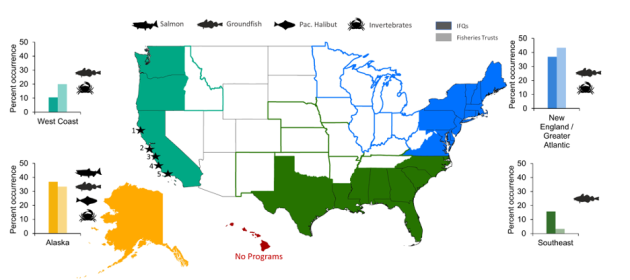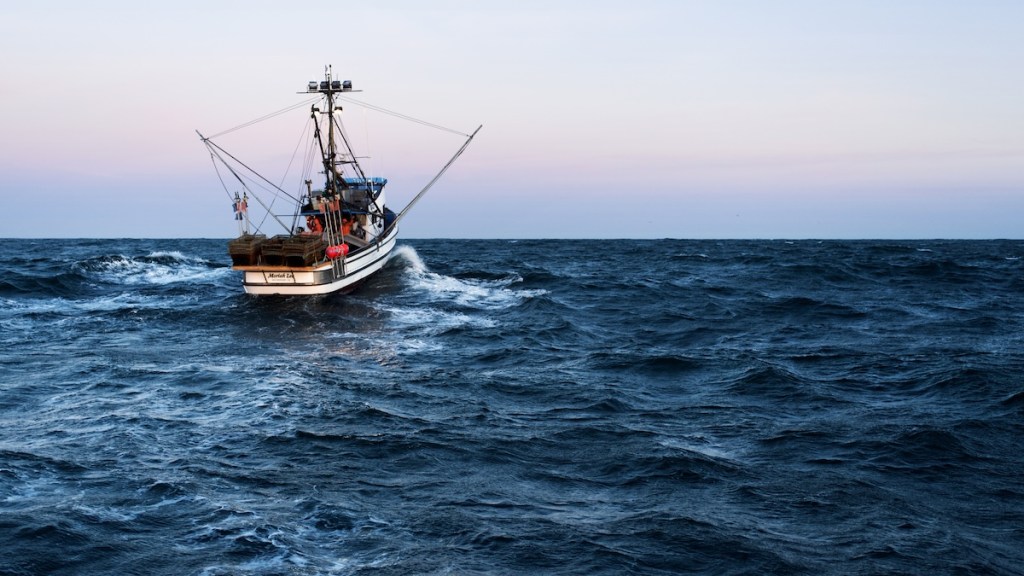Published in Marine Policy, a new paper from TNC staff and partners provides the first national review of the structure and function of community fisheries trusts in the U.S., as well as one of the first examples of guidance for the development and operation of such trusts in new geographies and fisheries.
The Gist
Fisheries trusts—community-based entities that acquire and manage fishery privileges with the goal of sustaining community access to locally important fisheries—emerged in the U.S. in response to the implementation of rights-based fisheries management systems. But in addition to mitigating fishery access challenges, the paper’s authors find that trusts can also advance broader fisheries sustainability and community resilience goals.
The paper, “Advancing fisheries sustainability and access through community fisheries trusts,” is a nationwide synthesis of trusts in the U.S., and includes a regional case study of five trusts in California that documents key attributes and lessons learned for trust formation and operation.
Among the key findings: certain enabling conditions, especially access to shared learning and knowledge transfer, partnerships, and funding play an important role in the formation and continued operation of fisheries trusts at the local level.
“TNC has helped develop fisheries trusts across the US, and we recognized there was a nationwide gap in assessing these types of organizations and even naming this as a nascent movement,” says lead author Kate Kauer, “This paper sheds light on the scale and types of trusts operating today and draws from our experience partnering with communities on the ground to share guidance for anyone looking to develop trusts.”
While fisheries trusts can serve both economic and conservation goals, the review finds that such combined goals require a transparent tracking and reporting of specified metrics and objectives that is not currently common among trusts nationwide. The authors offer guidance on forming and operating fisheries trusts so they can achieve positive outcomes for both fishing communities and marine ecosystems.
The Big Picture
In the U.S., fisheries support 2.3 million jobs and generate $321 billion in sales impacts. Sustainable fisheries management interventions are critically important to ensure healthy marine ecosystems, ensuring sustainable food sources and thriving local livelihoods.
One effective fisheries management mechanism is to confer harvest rights (i.e., use rights) to individuals, companies, collectives, or cooperatives. This is known as rights-based management. These systems are used around the world and vary by geography and governing system.
Benefits of rights-based fisheries management systems can include limiting overexploitation of fishery resources, as they can increase stewardship by assigning the privileges, or rights, to fishing. These programs can also incentivize collective action among rights holders. However, rights-based management can also lead to negative consequences, such as consolidation of these fishing rights, or a removal of these rights away from local communities.
Enter community fisheries trusts. These are community-based entities that can acquire or manage fishery use rights for the purpose of sustaining community access to locally or traditionally important fisheries. The paper identifies 30 trusts in four federal management regions (Alaska, West Coast, New England, and Southeast), and details five specific California trusts: Fort Bragg Groundfish Conservation Trust, Half Moon Bay Commercial Fisheries Trust, Monterey Bay Fisheries Trust, Morro Bay Community Quota Fund, and Commercial Fishermen of Santa Barbara.

The Takeaway
Fisheries trusts provide important mechanisms for addressing local fishery access challenges and contributing to overall fishery sustainability. But to be successful, the authors note, such organizations need resources to enable leadership capacity, community support, and the acquisition of fishery use rights.
“In many places, fisheries trusts came about as a way to mitigate the risks of quota or permits moving out of communities,” notes Kauer. “But trusts can also bring additional value. Depending on their asset holdings, trusts could increasingly be looked to for adaptation to climate impacts in the future by offering community members diversified access to multiple fisheries.”
Fisheries trusts in the U.S. maintain a primary focus on economic goals and secondary focus on conservation goals, but evaluation and measurement of performance requires improved information tracking and reporting. The case study illustrates how the development of fisheries trusts can address community-specific fishery access challenges and simultaneously incentivize marine conservation practices.



